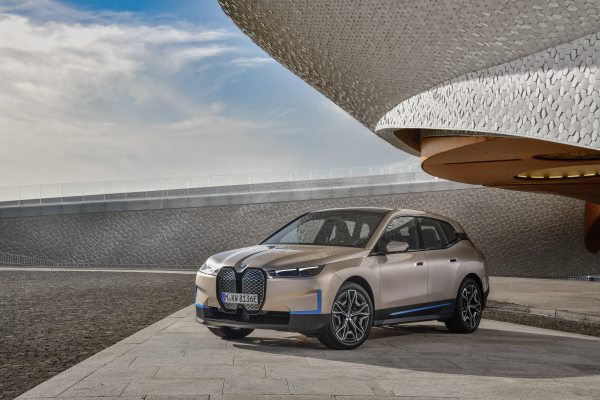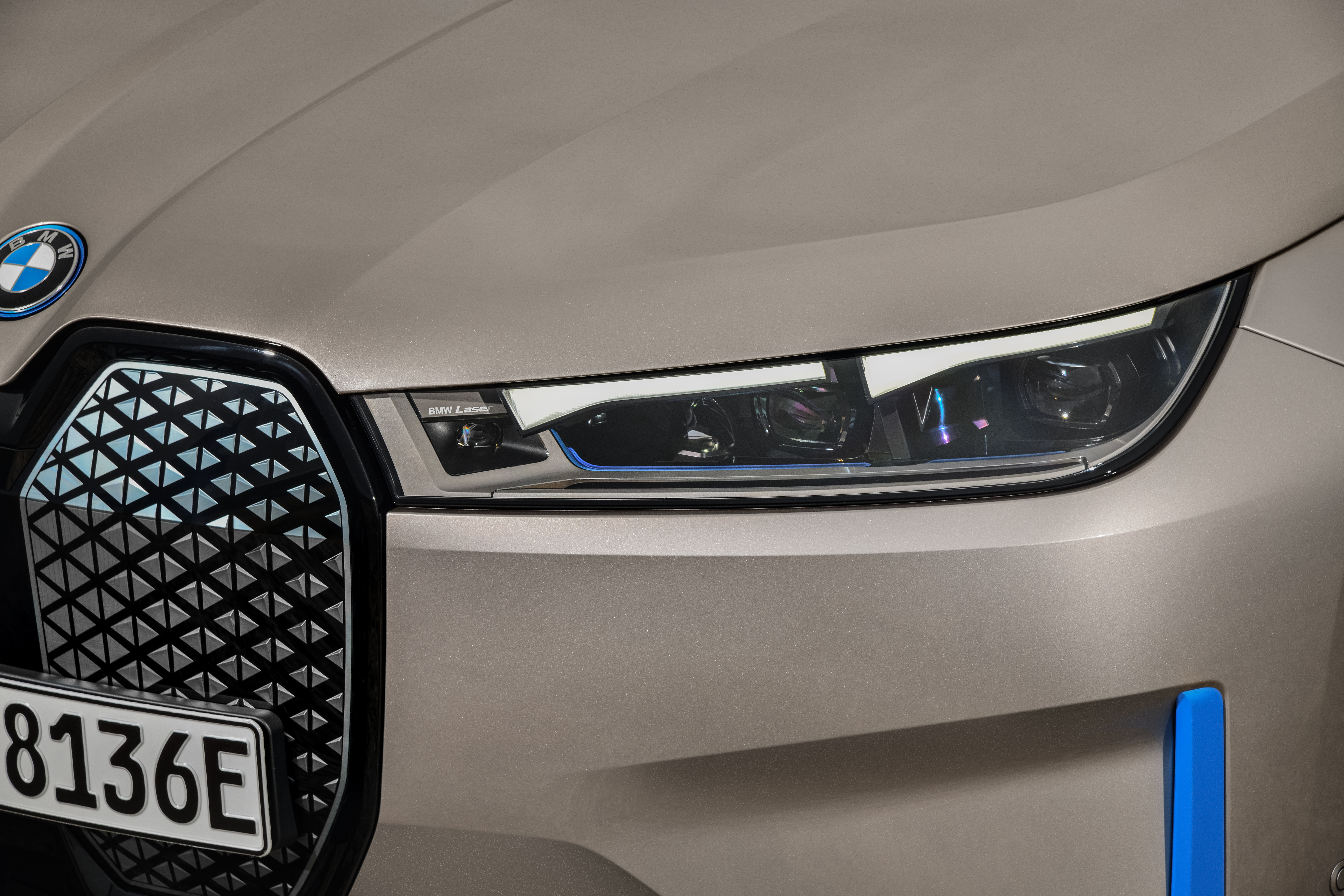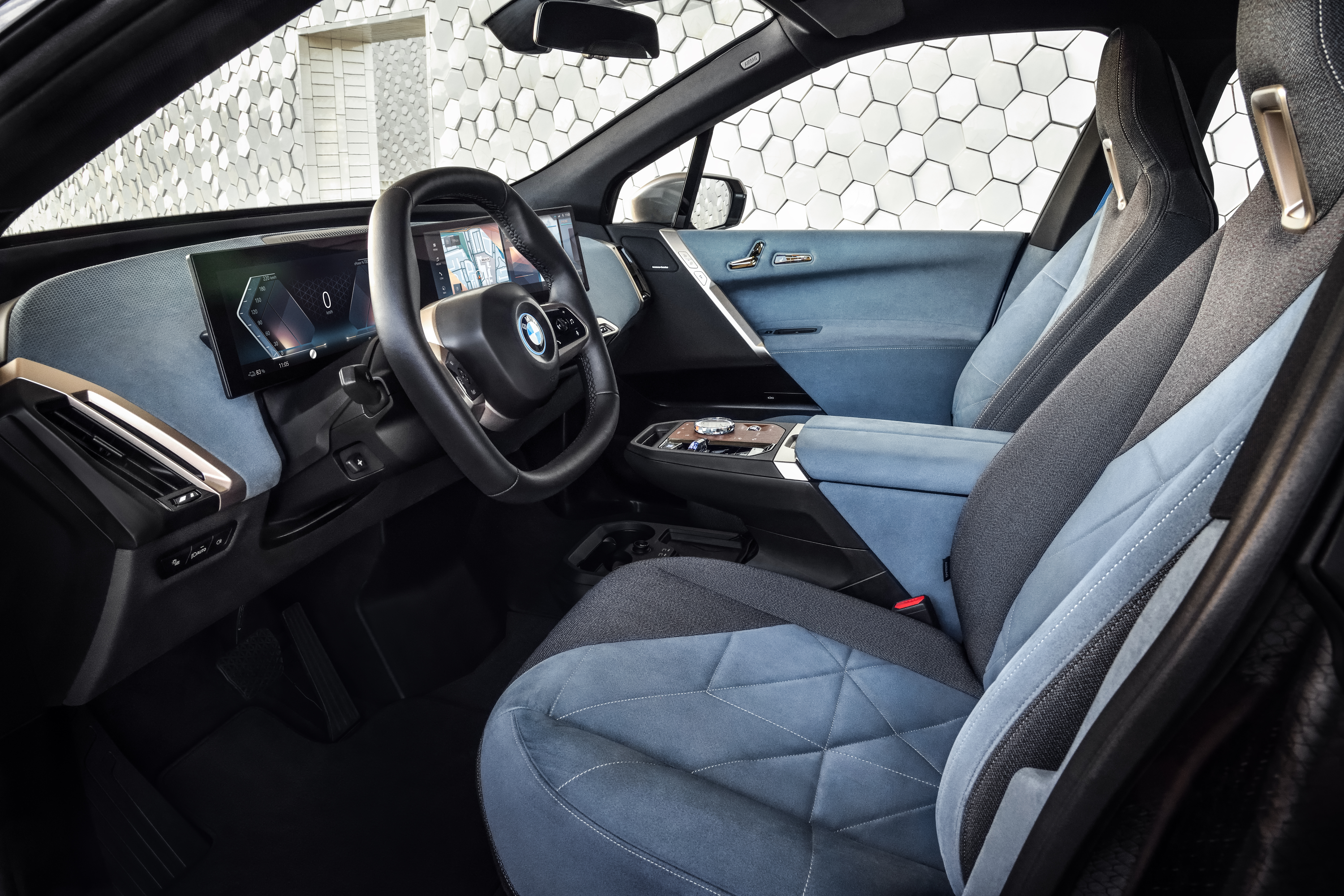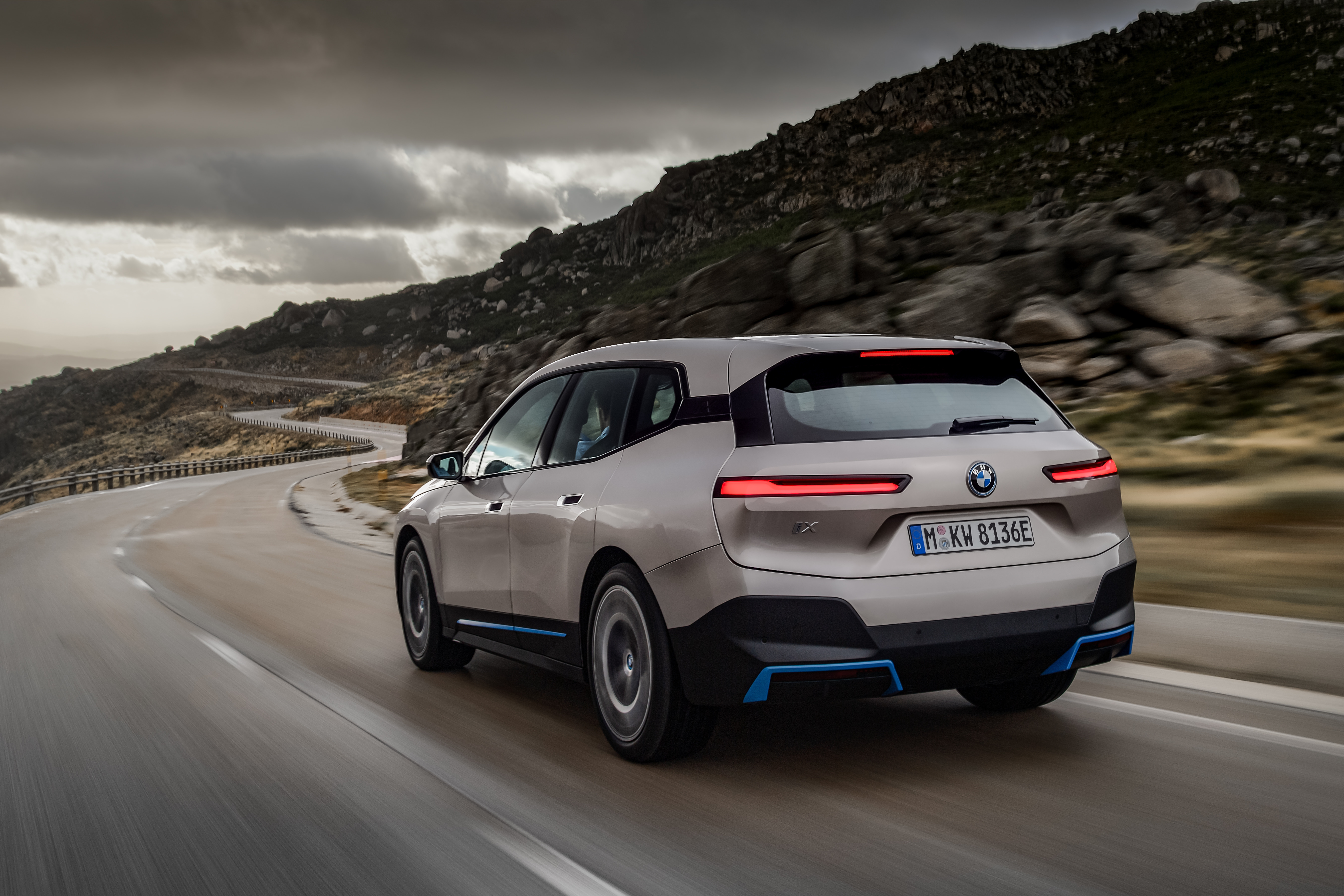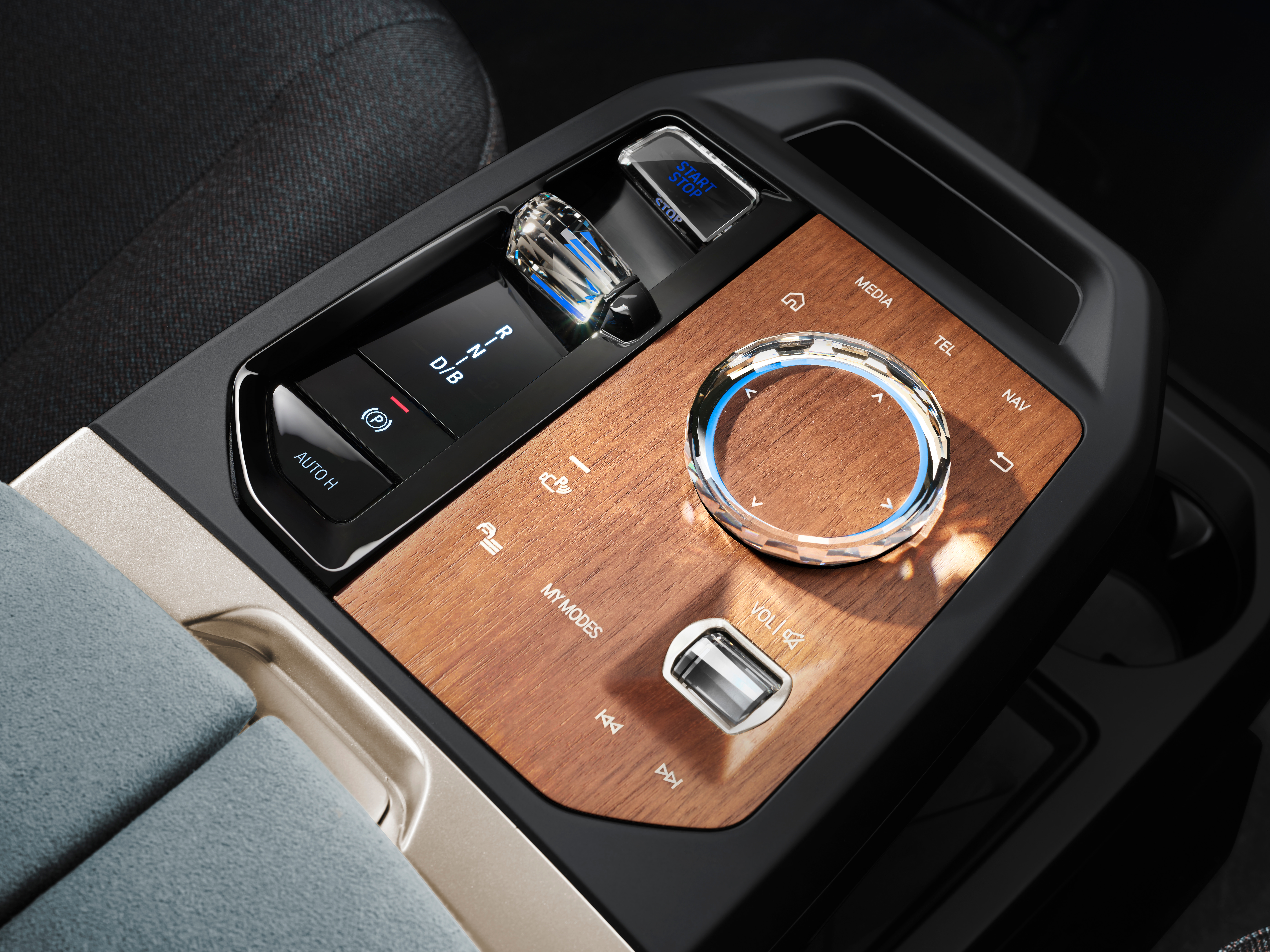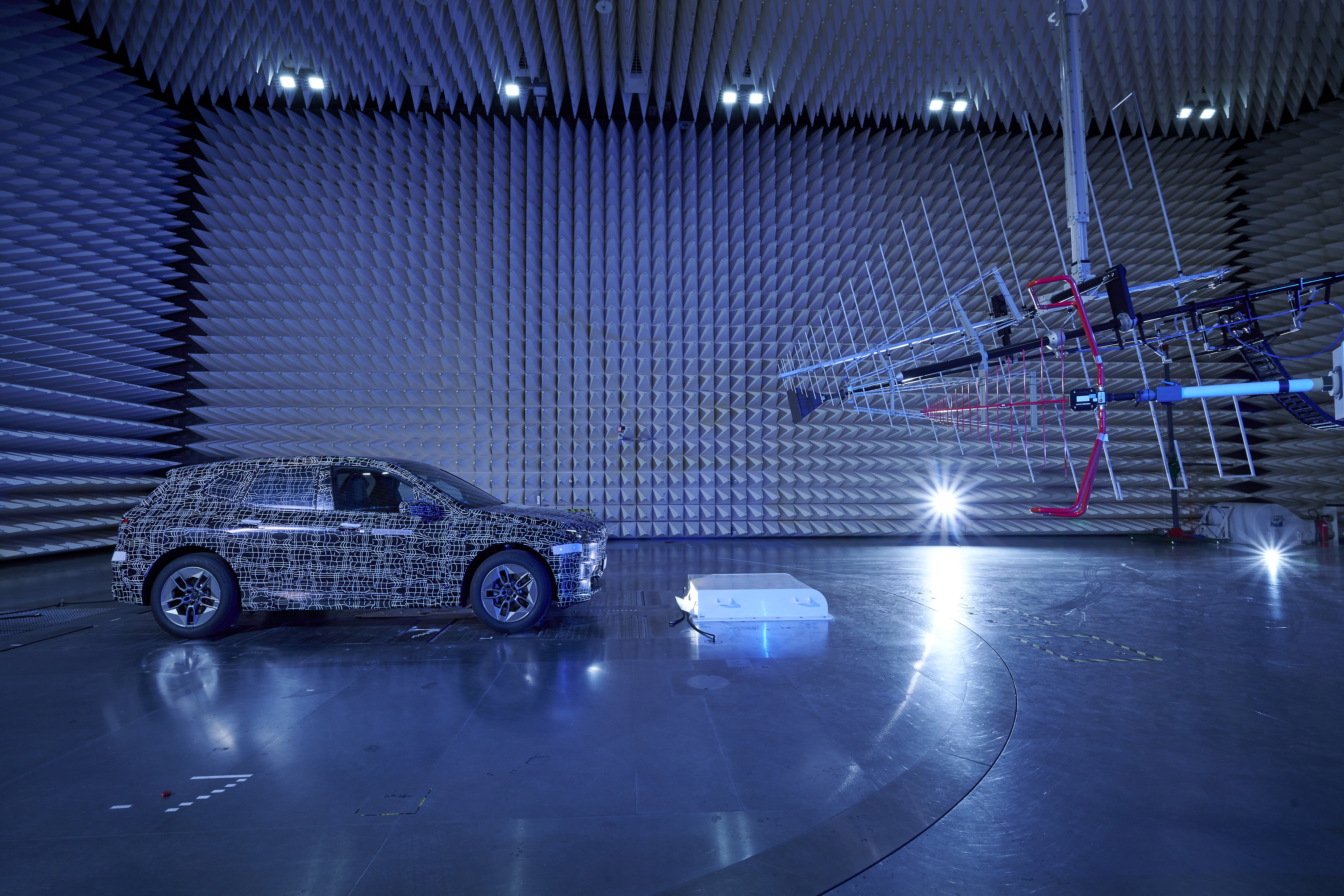At its (virtual) NextGen 2020 event, BMW today announced that the BMW iX, its new all-electric flagship previously known as the iNext, will launch at the end of 2021. Based on BMW’s fifth-generation eDrive technology, the iX will get a new look — and new kidney grille design — but its dimensions will be similar to the existing X5 or X6 SUVs. The company promises about 300 miles of range and 0-60 mph times of just under five seconds.
BMW has not released any pricing for the iX yet. Rumors earlier this year pegged it at close to $100,000.
The company says it will have more than a million electrified cars on roads by the end of 2021. Right now, about 13% of all BMW and MINI models registered in Europe are either all-electric or plug-in hybrids, and the expectation is that by 2030, that number will increase to 50%.
Coming next year, that lineup will include a number of new additions to the company’s electrified fleet, but the iX is clearly the focus here, though the next-generation eDrive system will also feature in the 2021 i4, for example, and BMW is experimenting with a 5-Series model that features three of these new motors for a maximum power output of 720 hp (we’re still talking about a company that made its name by combining performance and luxury, after all).
With DC fast charging at up to 200 kW, the iX should be able to charge from 10 to 80% in about 40 minutes. A 10-minute top-off at a fast-charging station should be enough for about 75 miles. For the most part, that’s in line with comparable electric cars, though Tesla’s V3 Supercharging promises somewhat faster recharge times and others can charge at more than 200 kW.
In addition to being BMW’s electric flagship, the iNext/iX unsurprisingly also showcases the company’s latest technology innovations. That’s obviously no surprise, given that BMW has used various iterations of its iNext concept car to think about how to best integrate new technologies into its next-generation of vehicles.
For the iX, these include all the standard driver assistance systems you’d expect today (though details there are scarce), a head-up display and large screens with a 12.3-inch instrument cluster and a 14.9-inch control display. But what’s maybe even more interesting here is the company’s over philosophy which the company describes as “shy tech.”
“Shy tech refers to technology that remains largely in the background and only reveals its functions when they are being used,” the company says in today’s announcement. “On entry into the car, the function in question is the electrically powered door locks. The interior welcomes the occupants of all five seats with a luxurious lounge-style ambience, and provides the space required to explore new ways of using time spent inside the car.”
For the most part, the user interface also strips away all distractions to allow the driver to focus on the road.
It’s no secret that BMW would like to — at some point — allow drivers to lounge in their self-driving cars. BMW hasn’t talked about the car’s driver assistant features yet, so that future hasn’t quite arrived just yet, but the company argues that by leaving out the usual center tunnel, it can provide a more “airy and specious feel” that “accentuates the lounge-style ambience and long-distance comfort provided by the interior.”
In many ways, the iX is the current apotheosis of BMW’s electric ambitions, and it is worth noting that, unlike others, the company is keeping a lot of the development in-house. That includes its Dingolfing plant, but as the company noted today, it is also developing its own battery cells and a new pilot plant for building its batteries near Munich should open in 2022. “This pilot plant will make BMW the first carmaker to cover the entire process chain for electric driving in-house,” BMW argues.
This wouldn’t be a major tech launch if it didn’t also feature a 5G aspect and indeed, the iX will feature built-in 5G connectivity, which should make it among the first — if not the first — 5G-enabled production car. Ideally, that means higher bandwidth and lower latency when the car needs to connect to the BMW cloud. But as we’ve all learned from recent phone launches, 5G is currently more of a buzzword than game-changing technology. What’s maybe more important here is that it may enable new C-V2X (Cellular Vehicle to Everything) solutions that will allow vehicles to communicate with each other and nearby smartphones — even without a mobile network.
[ad_2]
Source link
